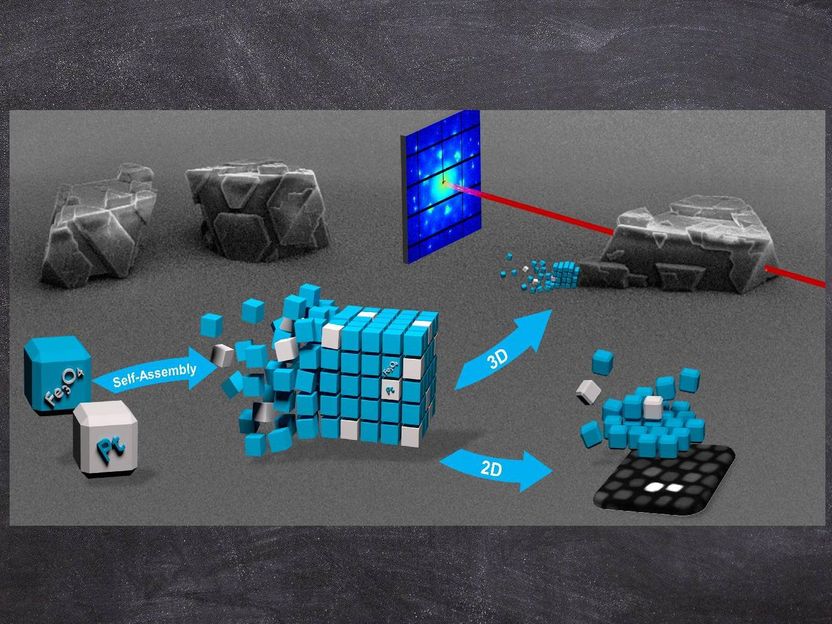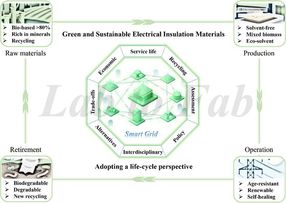Binary mesocrystals from the nanobuilding kit
Advertisement
Research team led by Constance produces three-dimensional mesocrystals from two different types of nanocrystals - platinum and magnetite - for the first time. This lays the foundation for the synthesis of novel nanostructured solids with previously unexplored properties.

Caption: Synthesis and structure elucidation of three-dimensional binary mesocrystals from platinum and magnetite nanocubes.
Christian Jenewein
Mesocrystals are a class of solids formed by the regular arrangement of nanocrystals. These are tiny nanoparticles that have unique properties due to their small size. In mesocrystals, they take on a highly organized, superordinate form in a densely packed lattice. A German-Swiss research team led by Prof. Dr. Helmut Cölfen, a chemist from Constance, has now succeeded in synthesising particularly complex mesocrystals with largely unknown chemical and physical properties and in elucidating their structure.
The special feature: The novel solids consist of two different nanocrystals as basic building blocks - platinum and magnetite cubes - and organize themselves independently into a three-dimensional superstructure. Until now, mesocrystals from two different basic building blocks, so-called binary mesocrystals, could only be produced as two-dimensional structures.
The synthesis route and structural evidence of the binary 3D mesocrystals from platinum and magnetite nanocrystals have just been published in the journal Angewandte Chemie. The results of the study represent the first step towards a possible "modular system", with which the properties of different nanocrystals could be combined in a targeted manner in the future and transferred from the nano- to the more manageable micro-world - with a multitude of possible advantages and applications.
Note: This article has been translated using a computer system without human intervention. LUMITOS offers these automatic translations to present a wider range of current news. Since this article has been translated with automatic translation, it is possible that it contains errors in vocabulary, syntax or grammar. The original article in German can be found here.




























































